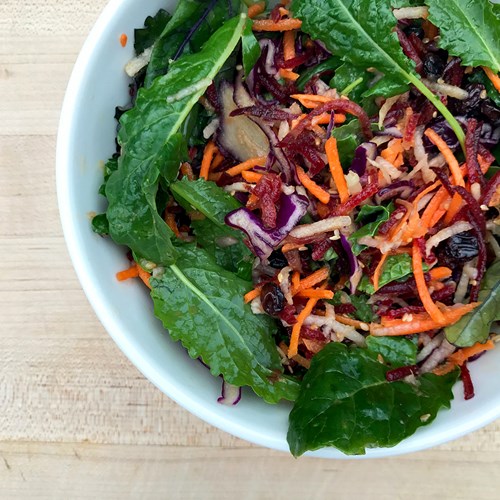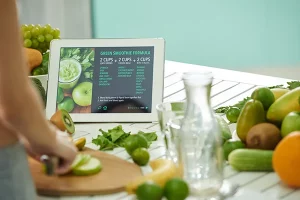Every day, it seems like a new food trend hits the market. Paleo, Keto, Vegan, Vegetarian, Pescetarian, flexitarian, lactose-free, gluten-free. The list goes on and on. With these diets and their restrictions consistently growing in popularity, it can be a challenge for restaurants to appeal to all audiences. As an owner and thought leader in the business, you undoubtedly want to stay ahead of the curve in the latest and greatest trends in food and ingredients and not worry about being “behind” the new gluten-free cafe that just opened up down the street. While it’s impossible to cater to every nutritional request, there is a way to ensure that there is something everyone can eat on your menu.
Now, this doesn’t mean that you need to eliminate your classic chicken parmesan dish that came straight from great-grandma’s recipe book or the nachos that your patrons have dubbed “world famous”. Creating an additional menu solely comprised of healthy dishes, or weaving healthy ingredients and/or substitution options throughout your main menu can be simple, effective and even fun. In doing so, customers, especially those who are on a special diet or are simply watching their weight, will feel like their needs are being taken into consideration, leading to continued business.
What this blog aims to do is provide you with some options to vary your menu and inform you of substitutions for unhealthy ingredients that will put customers at ease, but won’t change the integrity of the dishes that make your restaurant unique.
“Dressing on the side, please”
Salads are an easy win when it comes to incorporating nutrient-rich ingredients into your menu in an innovative way. Mix and match a variety of fruits and vegetables into your salad dishes, showing off your business’ creative side as well as an awareness of the health benefits of fruits and veggies.
For many health-conscious customers, salads are no longer treated as a precursor to the main event but are the main event themselves. So why not spice them up a little?
A Harvard study showed that the benefits of fruits and vegetables reduce the risk of diabetes, cardiovascular disease, high blood pressure and sugar, cancer, strokes and vision loss, to name a few. They also are instrumental in weight loss and gastrointestinal health as they are full of dietary fiber, which aids in curbing appetites. This same study showed that dark green, leafy vegetables like spinach, for instance, were strongly associated with decreased risk of cardiovascular disease as well as many citrus fruits.
Salad #1: Quinoa, Beet & Goat Cheese Salad
Ingredients:
Beets (anti-inflammatory, high in dietary fiber, low in fat, cholesterol, and calories, high in potassium, magnesium and Vitamin C, boosts stamina, digestion, and immunity)
Cooked quinoa (high in dietary fiber, iron, and protein, gluten-free)
Crumbled goat cheese (provides healthy fats and probiotics, a significant source of protein and calcium)
Balsamic vinaigrette (rich in antioxidants, aids digestion)

Salad #2: Frisee & Fruit Salad
Ingredients:
Blackberries (high in dietary fiber and vitamins, antibacterial and anti-inflammatory)
Mandarin oranges (high in antioxidants)
Blueberries (high in antioxidants, supports digestion and heart health)
Strawberries (heart-healthy antioxidants, assists in skin health, contains antioxidants and detoxifiers)
Frisee lettuce (good source of Vitamin K, A and C, folic acid and manganese)
Champagne vinaigrette (adds delicious flavor minus the bad fat)
Leg- What?
Familiar examples of legumes include chickpeas, lentils, and dry beans. They can provide a significant source of protein to any dish and can be instrumental in the substitution process on your menu. According to a Harvard study, numerous scientific studies have linked a legume-rich diet to reduced risk of diabetes, obesity, high blood pressure and cholesterol, heart disease and stroke. Not only that, but they are high in protein and fiber and low in fat: three traits you should always look for in a dish or ingredient.
Legumes appeal to nearly every diet since they are not an animal product. In addition, the fiber content, which is perhaps its most important and nutritionally valuable characteristic, is appealing to health-conscious customers as it slows absorption in the small intestine, lowers cholesterol, provides an abundance of plant nutrients that promote cardiovascular health and fills you up faster, which prevents overeating or, more specifically, overeating of the wrong foods.
Dishes Rich in Legumes:
- Vegetarian Chili: substitute meat with extra beans to make this recipe vegan and vegetarian-friendly
- Hummus and pita chips: start your customers off with this tasty appetizer made from chickpeas, a plant-based protein that balances cholesterol and heart health and reduces the risk of diabetes.
- BBB (Black bean burger): a meatless alternative to an “American classic” that provides all the flavor without the consequences of excess fat and cholesterol. Rich in protein and low in fat.
Using Nutrition Labels to Boost Customer Confidence: How MenuSano Can Help
Close to 70% of North Americans are overweight or obese. Why? Bigger portion size, cheaper ingredients to make food, and convenience of fast food options certainly contribute. So, how can you help as a leader and provider in this industry? It starts with education. Ultimately, customers deserve to know what they are eating and, in turn, should want to be aware and motivated to learn more about their eating choices.
People who turn to diet are often encouraged to NOT dine out because of large portions and the unknown nutritional facts. It’s safer to make your own meals at home where you are aware of what and how much you are eating.
MenuSano nutritional analysis software helps alleviate these concerns by taking the mystery out of restaurant dishes. It details the total amount of calories in the serving and the serving size as well as the fat and carbohydrate breakdown in terms of fiber and sugar. It also shows protein, sodium, and vitamins A & C as well as calcium and iron. Using this software is simple: input recipes, assemble recipes to form dishes and export the menu item to a nutritional label.
Instead of customers reaching for their MyFitnessPal app or frantically Google-searching “how many calories are in a linguine alfredo sauce dish?”, you have the opportunity to provide them with that information up front. With this information, customers can make informed decisions on what they want to order and will appreciate your transparency and accountability.
Going out to eat does not have to equal a “cheat day”. Providing meals that satisfy customer nutritional requirements and, more importantly, informing them of this, will benefit consumer satisfaction and retention.
See for yourself by signing up for a free trial with MenuSano today!



















